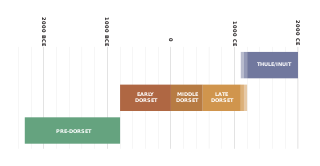Kenoayoak Pudlat is a former territorial level politician from Lake Harbour, Northwest Territories, now Kimmirut, Nunavut
Pudlat was elected to the Baffin South electoral district in the 1991 Northwest Territories general election. He defeated long serving incumbent Joe Arlooktoo. Pudlat did not return to the Legislature in 1995.

The Northwest Territories is a federal territory of Canada. At a land area of approximately 1,127,711.92 km2 (435,412.01 sq mi) and a 2021 census population of 41,070, it is the second-largest and the most populous of the three territories in Northern Canada. Its estimated population as of the second quarter of 2024 is 44,936. Yellowknife is the capital, most populous community, and the only city in the territory; its population was 20,340 as of the 2021 census. It became the territorial capital in 1967, following recommendations by the Carrothers Commission.

Northern Canada, colloquially the North or the Territories, is the vast northernmost region of Canada, variously defined by geography and politics. Politically, the term refers to the three territories of Canada: Yukon, Northwest Territories and Nunavut. This area covers about 48 per cent of Canada's total land area, but has less than 0.5 per cent of Canada's population.

The commissioner of Nunavut is the Government of Canada's representative in the territory of Nunavut. The current commissioner since January 14, 2021 is Eva Aariak who served as Premier from 2008 to 2013.

Inuinnaqtun is an Inuit language. It is spoken in the central Canadian Arctic. It is related very closely to Inuktitut, and some scholars, such as Richard Condon, believe that Inuinnaqtun is more appropriately classified as a dialect of Inuktitut. The government of Nunavut recognises Inuinnaqtun as an official language in addition to Inuktitut, and together sometimes referred to as Inuktut. It is spoken in the Northwest Territories as well and is recognised as an official language of the territory in addition to Inuvialuktun and Inuktitut.

The Arctic Winter Games are a biennial multi-sport and indigenous cultural event involving circumpolar peoples residing in communities or countries bordering the Arctic Ocean.

Kinngait, known as Cape Dorset until 27 February 2020, is an Inuit hamlet located on Dorset Island near Foxe Peninsula at the southern tip of Baffin Island in the Qikiqtaaluk Region of Nunavut, Canada.

Coral Harbour is a small Inuit community that is located on Southampton Island, Kivalliq Region, in the Canadian territory of Nunavut. Its name is derived from the fossilized coral that can be found around the waters of the community which is situated at the head of South Bay. The name of the settlement in Inuktitut is Salliq, sometimes used to refer to all of Southampton Island. The plural Salliit, means large flat island(s) in front of the mainland.

Kimmirut is a community in the Qikiqtaaluk Region, Nunavut, Canada. It is located on the shore of Hudson Strait on Baffin Island's Meta Incognita Peninsula. Kimmirut means "heel", and refers to a rocky outcrop in the inlet.

The British Arctic Territories were a region of British North America, composed of islands to the north of continental North America. They are now known as the Arctic Archipelago.
The Politics of Northwest Territories involves not only the governance of the Northwest Territories but also the social, economic and political issues specific to the territory. This includes matters relating to local governance and governance by the federal government of Canada, the inclusion of the aboriginal population in territorial affairs, and the matter of official languages for the territory.

The history of Nunavut covers the period from the arrival of the Paleo-Eskimo thousands of years ago to present day. Prior to the colonization of the continent by Europeans, the lands encompassing present-day Nunavut were inhabited by several historical cultural groups, including the Pre-Dorset, the Dorsets, the Thule and their descendants, the Inuit.

Nunavut is the largest and northernmost territory of Canada. It was separated officially from the Northwest Territories on April 1, 1999, via the Nunavut Act and the Nunavut Land Claims Agreement Act, which provided this territory to the Inuit for self-government. The boundaries had been drawn in 1993. The creation of Nunavut resulted in the first major change to Canada's political map in half a century since the province of Newfoundland was admitted in 1949.
The Nunavut Land Claims Agreement was signed on May 25, 1993, in Iqaluit, by representatives of the Tunngavik Federation of Nunavut, the Government of Canada and the Government of the Northwest Territories. This agreement gave the Inuit of the central and eastern Northwest Territories a separate territory called Nunavut. It is the largest Aboriginal land claim settlement in Canadian history.
Joe Arlooktoo is a northern Canadian artist, adept at soapstone and ivory carving, and a municipal and territorial-level politician who was a member of the Northwest Territories Legislature from 1979 until 1991. He is a current councillor of Kimmirut, Nunavut.

Pudlo Pudlat, was a Canadian Inuk artist whose preferred medium was a combination of acrylic wash and coloured pencils. His works are in the collections of most Canadian museums. At his death in 1992, Pudlo left a body of work that included more than 4000 drawings and 200 prints.

Pitaloosie Saila was a Canadian Inuk graphic artist who predominantly made drawings and lithograph prints. Saila's work often explores themes such as family, shamanism, birds, and her personal life experiences as an Inuk woman. Her work has been displayed in over 150 exhibitions nationally and internationally, such as in the acclaimed Isumavut exhibition called "The Artistic Expression of Nine Cape Dorset Women". In 2004, Pitaloosie Saila and her well-known husband and sculptor Pauta Saila were both inducted into the Royal Canadian Academy of Arts.
Innukjuakju Pudlat (1913–1972), alternatively known as Inukjurakju, Innukjuakjuk, Inujurakju, Innukjuakjuk Pudlat, Inukjurakju Pudlat, Innukyuarakjuke Pudlat, or Innukjuarakjuke Pudlat, was an Inuk artist who worked primarily in drawing and printmaking. During her artistic career she worked with the West Baffin Eskimo Co-operative in Cape Dorset, Nunavut.